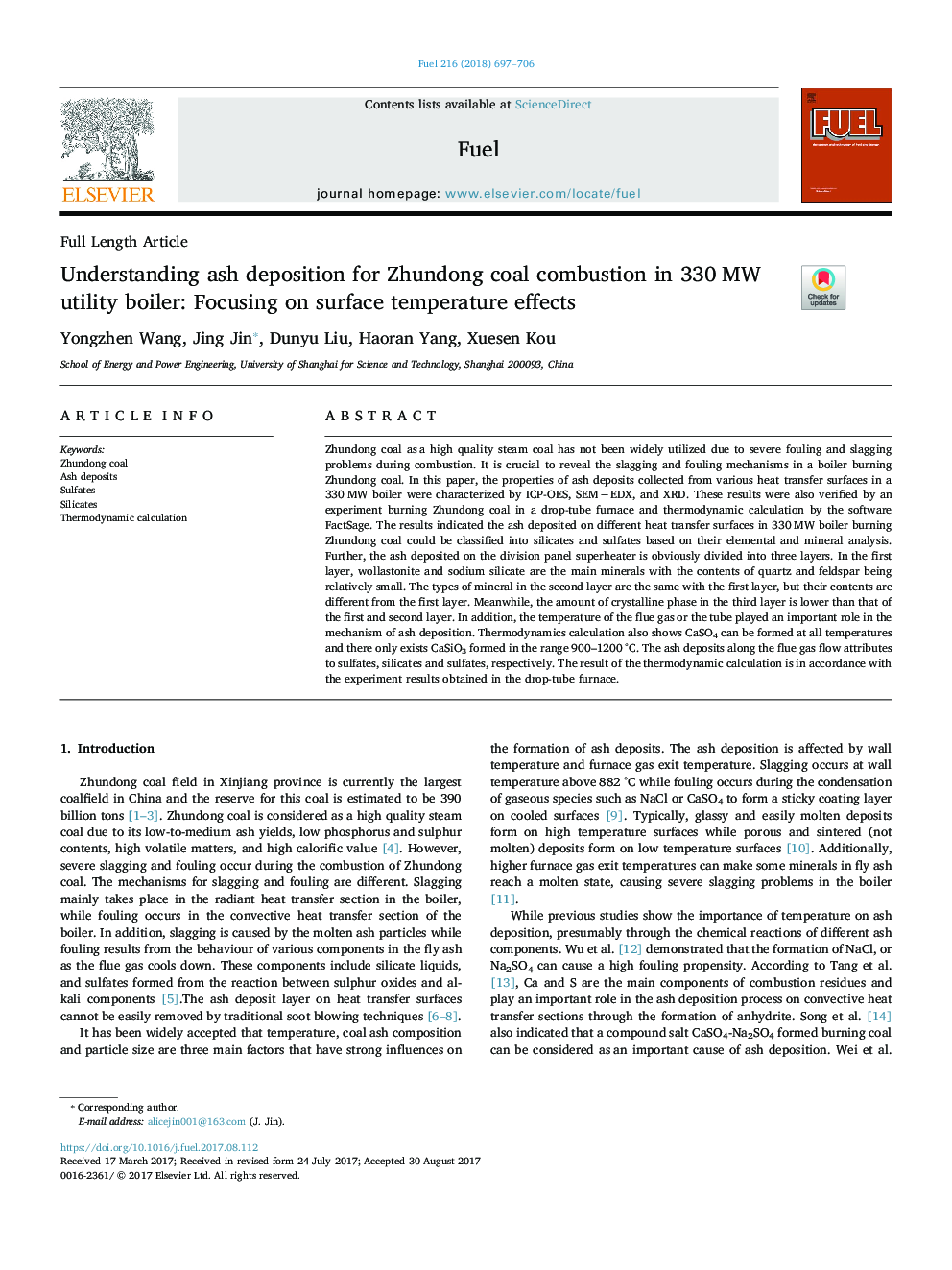| Article ID | Journal | Published Year | Pages | File Type |
|---|---|---|---|---|
| 6632230 | Fuel | 2018 | 10 Pages |
Abstract
Zhundong coal as a high quality steam coal has not been widely utilized due to severe fouling and slagging problems during combustion. It is crucial to reveal the slagging and fouling mechanisms in a boiler burning Zhundong coal. In this paper, the properties of ash deposits collected from various heat transfer surfaces in a 330 MW boiler were characterized by ICP-OES, SEMâEDX, and XRD. These results were also verified by an experiment burning Zhundong coal in a drop-tube furnace and thermodynamic calculation by the software FactSage. The results indicated the ash deposited on different heat transfer surfaces in 330 MW boiler burning Zhundong coal could be classified into silicates and sulfates based on their elemental and mineral analysis. Further, the ash deposited on the division panel superheater is obviously divided into three layers. In the first layer, wollastonite and sodium silicate are the main minerals with the contents of quartz and feldspar being relatively small. The types of mineral in the second layer are the same with the first layer, but their contents are different from the first layer. Meanwhile, the amount of crystalline phase in the third layer is lower than that of the first and second layer. In addition, the temperature of the flue gas or the tube played an important role in the mechanism of ash deposition. Thermodynamics calculation also shows CaSO4 can be formed at all temperatures and there only exists CaSiO3 formed in the range 900-1200 °C. The ash deposits along the flue gas flow attributes to sulfates, silicates and sulfates, respectively. The result of the thermodynamic calculation is in accordance with the experiment results obtained in the drop-tube furnace.
Related Topics
Physical Sciences and Engineering
Chemical Engineering
Chemical Engineering (General)
Authors
Yongzhen Wang, Jing Jin, Dunyu Liu, Haoran Yang, Xuesen Kou,
